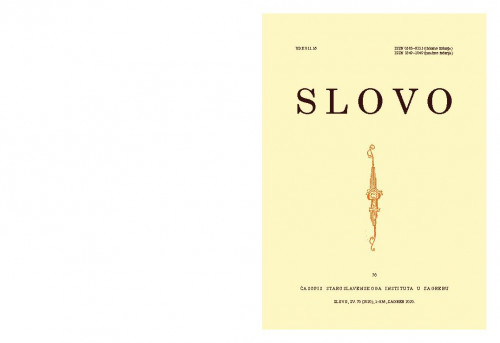U ovom su radu istaknute značajke temporala Drugoga beramskoga (ljubljanskoga) brevijara (BrBer2) koje se razlikuju od hrvatskih crkvenoslavenskih značajki, a koje bi se mogle pripisati vernakularu. Dosadašnji pokušaji utvrđivanja vernakularnih elemenata na prvih 50 listova s aspekta dijakronijske dijalektologije pokazuju da taj dio temporala BrBer2 pripada sjevernomu tipu liturgijskih tekstova. Razlog je takvomu zaključku u prvom redu brojnost žd-refleksa jotacije dentala d (d) iako je na dijelu 38ra-50ra ipak rjeđe zastupljen, što pridonosi pretpostavci da je potonji dio pisala druga ruka. Premda su prvih 30 (odnosno prvih 20, pa 21 – 30) listova, kao što je odredio M. Žagar na temelju osnovnoga dojma pisma (prema slovnim proporcijama, smještaju u retku), pisala dva pisara – prema udjelu su vernakularnih značajki i stranice od 30cd do 37cd bez bitnih različitosti, što govori ili o pripadnosti pisara istoj pisarskoj školi ili o zajedničkomu materinskom govoru. Vodeći računa o (ne)pouzdanosti starih tekstova kao dijalektoloških predložaka, jednakom se je metodologijom – dijakronijske ili povijesne dijalektologije – pokušalo u ovom radu utvrditi ima li u ostalim dijelovima temporala (104vd–122vd, 165ra–194vd i 237ra–240vd), koje je prema spomenutomu kriteriju izdvojio M. Žagar, vernakularnih elemenata. Takve su jezične činjenice uspoređene s rezultatima istraživanja beramskoga govora provedenog za potrebe ovoga rada s ciljem da se odgovori na pitanje jesu li temporal BrBer2 i pisali pisari kojima je materinski idiom bio beramskoga tipa ili su pišući unosili elemente beramske skupine govora. Dvije su među njima temeljne: odraz jata (;) u gramatičkim morfemima i odraz stražnjega nazala ǫsъ (õ).; The focus of the paper is on the linguistic characteristics of the Temporal of the Second Beram (Ljubljana) Breviary (BrBer2) that differ from the Old Church Slavonic characteristics and that could be attributed to the vernacular. Efforts to identify vernacular elements in the first 50 folios from the perspective of diachronic dialectology indicate that this part of the Temporal belongs to the northern type of liturgical texts. By taking into account the reliability, or lack thereof, of old texts as dialectological templates, the same methodology was applied to other parts of the temporal (104vd–122vd, 165ra–194vd i 237ra–240vd) that were singled out by Žagar on the basis of the primary impression of the script (proportions of the letters, position within the line) in other to verify the presence of vernacular elements. Those linguistic characteristics were then compared to the results of the research into the idiom of Beram with the aim of determining whether Temporal I was written by scribes whose mother idiom was of the Beram type or whether the scribes had simply introduced elements of this type into the text. Among the identified linguistic characteristics two seem to be fundamental: the reflex of yat () in grammatical morphemes and the reflex of the posterior nasal. An increased number of Ekavisms in the first two parts is a consequence of the tendency to note down the Ekavian reflex of yat () more freely, i.e. of the perception of yat () as an e-type vowel, but it could also be a result of the influence of the idiom of Beram. This seems to be supported by the fact that the Ekavian replacements of yat () are also present in grammatical morphemes. Ikavisams in lexical morphemes seem to support the notion that the template for the Second Beram (Ljubljana) Breviary originated in the Krk area.
Sažetak

 Slovo : časopis Staroslavenskoga instituta u Zagrebu : 70(2020) / glavna i odgovorna urednica Vida Vukoja.
Slovo : časopis Staroslavenskoga instituta u Zagrebu : 70(2020) / glavna i odgovorna urednica Vida Vukoja.